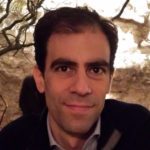Link to Pubmed [PMID] – 32426477
Link to DOI – 10.1126/sciadv.aaz5424
Sci Adv 2020 May; 6(18): eaaz5424
The cellular basis and extent of neural stem cell (NSC) self-renewal in adult vertebrates, and their heterogeneity, remain controversial. To explore the functional behavior and dynamics of individual NSCs, we combined genetic lineage tracing, quantitative clonal analysis, intravital imaging, and global population assessments in the adult zebrafish telencephalon. Our results are compatible with a model where adult neurogenesis is organized in a hierarchy in which a subpopulation of deeply quiescent reservoir NSCs with long-term self-renewal potential generate, through asymmetric divisions, a pool of operational NSCs activating more frequently and taking stochastic fates biased toward neuronal differentiation. Our data further suggest the existence of an additional, upstream, progenitor population that supports the continuous generation of new reservoir NSCs, thus contributing to their overall expansion. Hence, we propose that the dynamics of vertebrate neurogenesis relies on a hierarchical organization where growth, self-renewal, and neurogenic functions are segregated between different NSC types.





